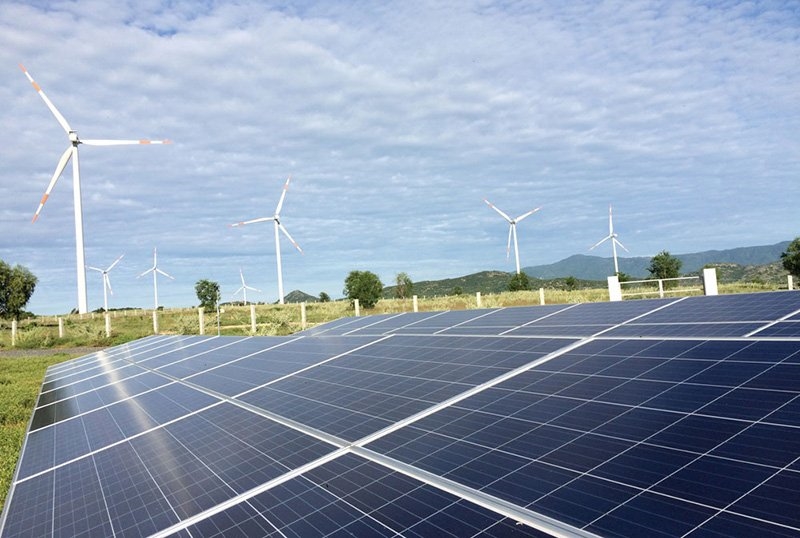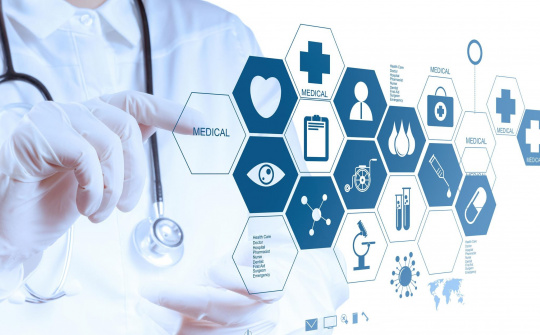With its existing advantages, Vietnam possesses great potential to develop renewable energy, however, along with that, there are many challenges that the Southeast Asian country needs to face.
According to the National Electricity Development Plan, Vietnam needs to achieve a renewable energy rate of 15-20% by 2030 and 20-30% by 2045. Currently, in Vietnam, coal and hydroelectric thermal power are still the two main sources of energy supply, due to the stability of power source and affordable price.
The shift to investing in renewable energy, based on many geographical and natural advantages, will help Vietnam be more proactive in ensuring energy sources for economic development.
 |
| Vietnam has great potential for renewable energy, especially solar power and wind power. (Source: baodautu.vn) |
Potential for development of renewable energy industry
Vietnam is considered the country with the greatest potential for solar energy development in Southeast Asia. According to the World Bank, Vietnam can reach 85 GW of solar power by 2030 and 214 GW by 2050.
With more than 2,500 hours of sunshine per year, Vietnam has great potential in solar energy. Power projects are being implemented across the country, especially in sunny regions such as the central and southern regions.
Owning large areas of vacant land is also a favorable condition for Vietnam to build power plants using renewable energy. The Government has also issued many preferential policies to attract investment in this field. Besides, the demand for electricity in Vietnam is increasing, creating significant development opportunities for the clean energy market.
A coastline of more than 3,200 km and many coastal areas with high wind speeds create great potential for Vietnam to develop wind power, which is gradually becoming an important part of the country’s renewable power source.
Vietnam’s wind power industry is making strong developments. As of November last year, the total installed wind power capacity reached more than 7 GW, a 10-fold increase compared to 2020. Many large wind power projects are being implemented such as the La Gan offshore wind power project (4 GW), Mui Dinh offshore wind power project (3.5 GW), and Thang Long offshore wind power project (2 GW).
Steep mountainous terrain, many rivers and streams, and abundant rainfall also create favorable conditions for hydropower development in Vietnam. As of November 2023, the total hydropower installation capacity reached more than 23 GW, accounting for more than 40% of the country’s total power capacity. Large power plants in Vietnam include Hoa Binh, Son La, Lai Chau, and Yaly.
Hydroelectric projects are not only a source of clean energy but also play a significant role in regulating drought and floods, and promoting tourism development in many areas.
 |
| Son La hydroelectric plant, the largest hydroelectric plant in Southeast Asia. (Source: vnexpress) |
Challenges need to be overcome to develop renewable energy
Aiming to focus on developing renewable energy, Vietnam needs to face many challenges, one of which is the requirement to further invest in infrastructure and technology to take advantage of the industry’s potential, especially in energy storage and distribution. Currently, the power grid infrastructure does not meet the requirements of strong development of renewable energy, so connecting clean energy projects to the power grid still faces many difficulties.
Although the cost of renewable energy production has decreased, initial costs are still high for many projects, especially solar and wind power. Therefore, the search for funding and investment needs to be promoted to support and encourage people to access renewable energy sources.
Vietnam also needs to adjust policies and regulations on renewable energy, as well as create more favorable conditions for investors and businesses to ensure a stable investment environment with clear legal regulations, thereby attracting the attention of foreign investors in this field.
Renewable energy technology now has not yet produced the expected efficiency compared to traditional energy sources. Research and development of new technologies to improve efficiency and reduce costs of clean energy is truly necessary. In addition, it is necessary to focus on improving the professional qualifications of industry human resources.
Climate change is also a factor worth considering because it can affect the development potential of renewable energy sources such as wind power and hydropower. Therefore, the development of these energy sources needs to be carefully evaluated to ensure maximum efficiency of power projects.
Renewable energy plays an important role in ensuring energy security and environmental protection in Vietnam. By exploiting the potential of renewable energy sources, Vietnam can move further on the path of sustainable development and contribute to global efforts to combat climate change./.





